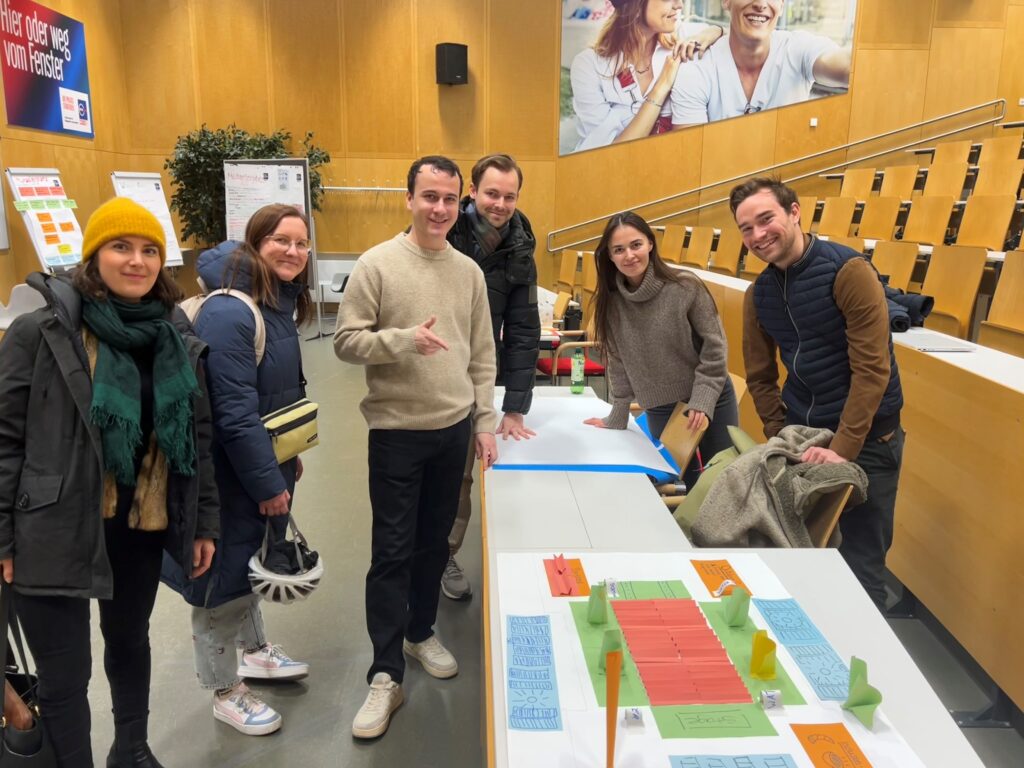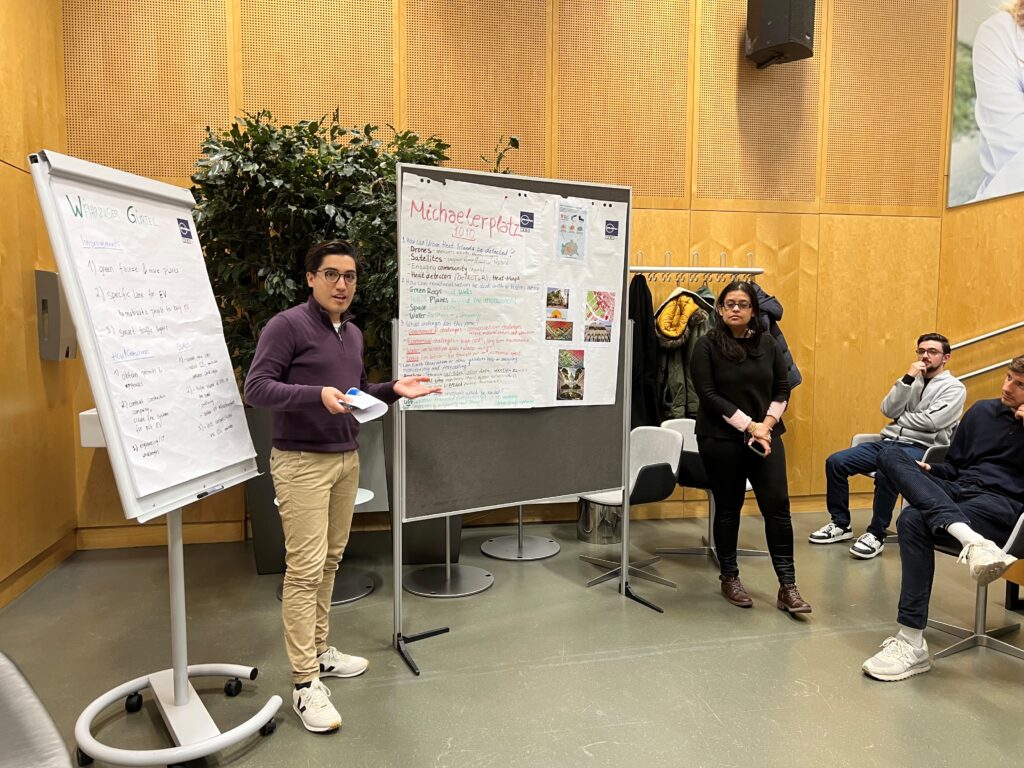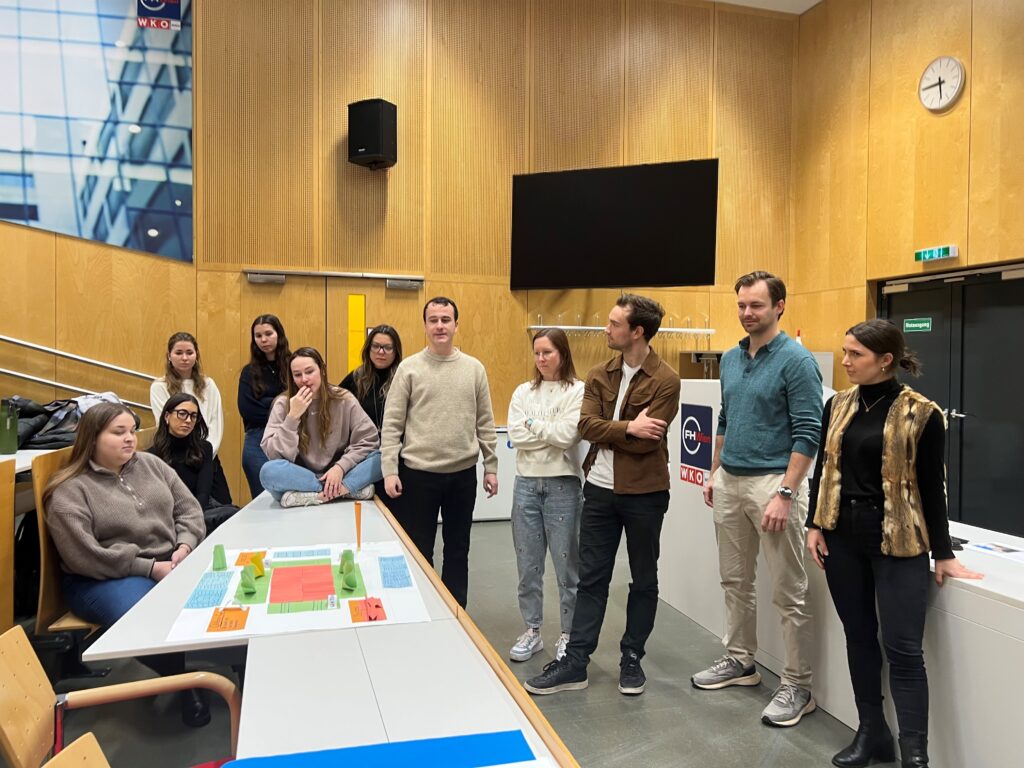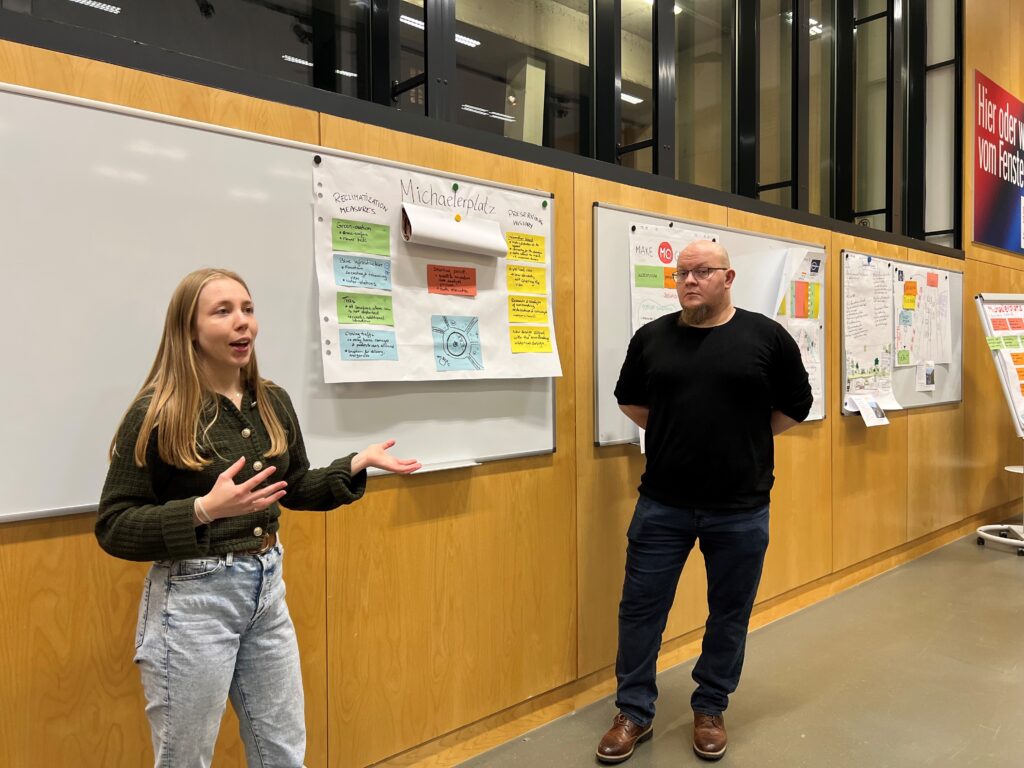Vienna faces the challenge of maintaining its high quality of life in the face of climate change and the need for sustainable resource management. Students of the Master’s program in Executive Management developed innovative solutions for real-life case studies as part of the ‘International Sustainability Project’ course in cooperation with Urban Innovation Vienna – the Climate & Innovation Agency of the City of Vienna. Their ideas show how well thought-out urban planning can shape a more liveable future.
Divided into teams, they worked on four different squares and streets in Vienna and developed innovative projects to improve the urban environment.
Michaelerplatz: From heat island to green refuge
Michaelerplatz, a historic jewel in the heart of Vienna, is often exposed to unbearable heat in summer. Students took up this challenge and developed a concept that transforms the square into a green oasis without detracting from its historical character.
Währinger Gürtel: Two approaches for a livable transport artery
The Währinger Gürtel, one of Vienna’s pulsating traffic arteries, is known for its noise and high traffic congestion. Two teams dedicated themselves to the task of transforming the Gürtel into a more livable space – with different but equally exciting approaches. One team presented a bold vision: the complete relocation of the carriageway underground, integrated into a network of underground and bus lines. The space thus freed up could be transformed into a spacious green area that invites people to linger and significantly improves the quality of life for neighboring residents. The aim is to turn the Gürtel into a place for people to meet and relax by creating attractive areas for people to spend time.
MuseumsQuartier: an inclusive meeting place for everyone
The MuseumsQuartier (MQ) is a popular meeting place for art and culture enthusiasts. Another team of students developed a concept to make the inner courtyard of the MQ even more inclusive and community orientated. The concept included a barrier-free café, a sports area and a children’s playground, as well as green spaces and a rainwater utilization system for watering the plants.
University of Vienna: Monitoring changes
The last group dealt with the Schottentor traffic junction at the University of Vienna and focused on the question of how changes in public space can be monitored and analyzed. The students looked for ways to systematically record and evaluate changes in urban space in order to make well-founded decisions for sustainable urban development.
The students excelled in their tasks and applied all the knowledge acquired during their courses in Project Portfolio Management and the International Sustainability Project.



